D - Dag to doric

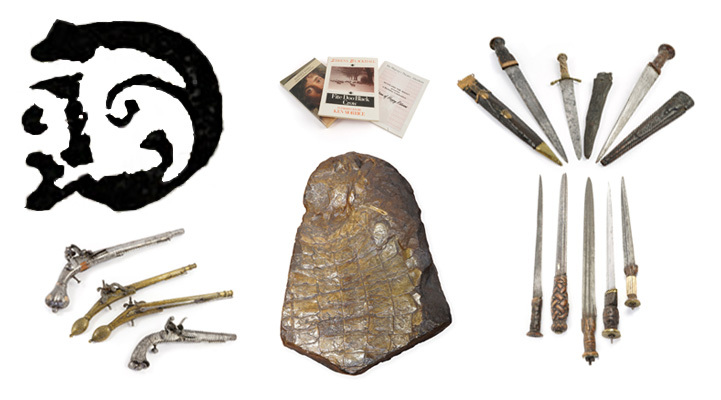

dag
1 n a type of hand firearm, a pistol;
2 v to shoot.
In Scotland, a country whose independence for centuries was only maintained by force of arms, and whose internal history down to the middle of the 18th century was a record of civil wars and family feuds, the possession of arms was a necessity and not a luxury.
C.E. Whitelaw 1923. Scottish Firearms.
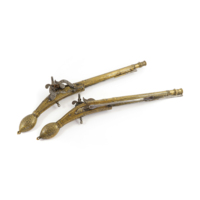
Pair of lemon butted brass and steel pistols, snaphaunce locks. Made by A.G. in 1634.
ABDUA:18041

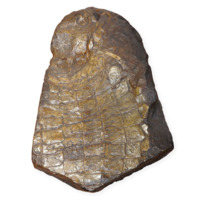
Fossilised scales of Stagonolepis robertsoni. a mammal-like reptile from near Elgin.
LEMUR:1000003
dinosaur n
literally 'terrible lizard'; an extinct member of the order Dinosauria; popularly a large prehistoric reptile
In the sandstone quarries around Elgin a hundred years ago people found traces of scaly skins and bones. These turned out to be fossils of reptiles from the Permian and Triassic periods (280 to 210 million years ago) that lived amongst the river and dune systems which bordered the Grampian Highlands. Some of these were 'mammal-like reptiles' which were related to the earliest mammals, while others were the ancestors of the dinosaurs. A 60cm long early dinosaur that hopped (Saltopus elginensis) was also found.

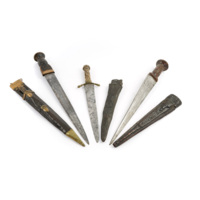
Dirks with sheaths.
left: Regimental dirk of Queen Charlottes Own Highlanders stamped 'Hunter, Army Contractor Parliament Square, Edinburgh' (c1814-20). ABDUA:18048
middle: Bayonette blade converted into dirk (mid 17th cent.) ABDUA:18053
right: Dirk with a heavy triangular blade (late 17th cent.) ABDUA:18050
durk la16c-, dirk 19c-
1 n a dagger.
2 n a stab, a prod. la19c-
3 vt to stab with a durk la16c-e20c.
What slaughter made I wi ma durk,
Amo Sarpedons troop!
David Fergusson 1785 A Selection of Scottish Poems Chiefly in the Broad Buchan Dialect.

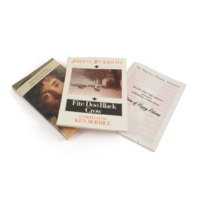
Doric literature.
left: Sunset Song, a novel based in the Howe of the Mearns in the early 20th century (1932). LEMUR:1000022
middle: Poems by Sheena Blackhall, a poet who writes in the Doric (1989). LEMUR:1000017
right: Scotland the What? theatre programme, North-East stage humour (1990). LEMUR:1000016
Doric n
A Greek dialect, or any dialect thought to resemble it. The language of North-East Scotland
The broad, hard dialect spoken by the natives of Doris, Greece. Hence any broad rustic dialect, and especially that of Scotland's Brewers Dictionary of Phrase & Fable 1970.


